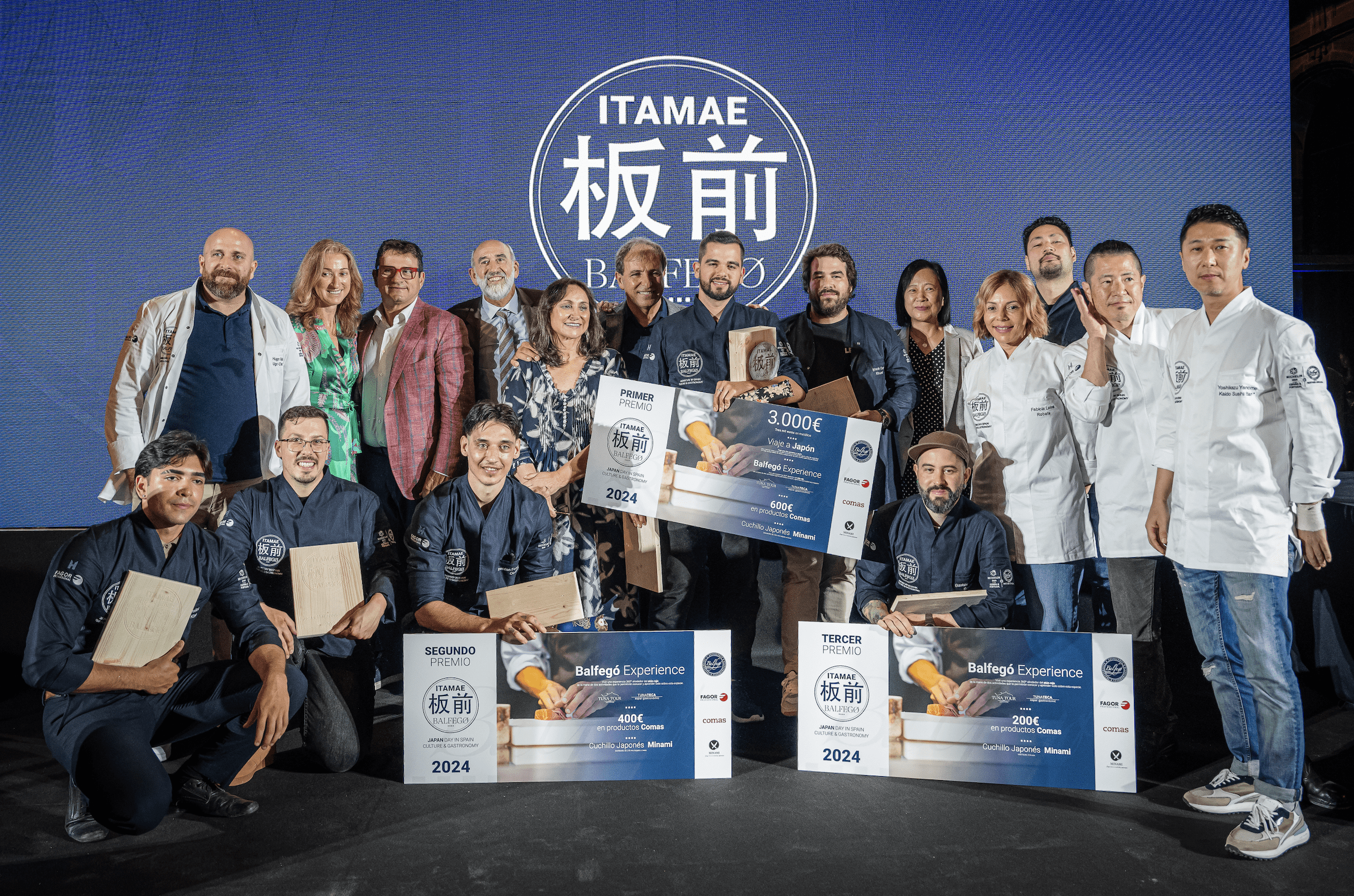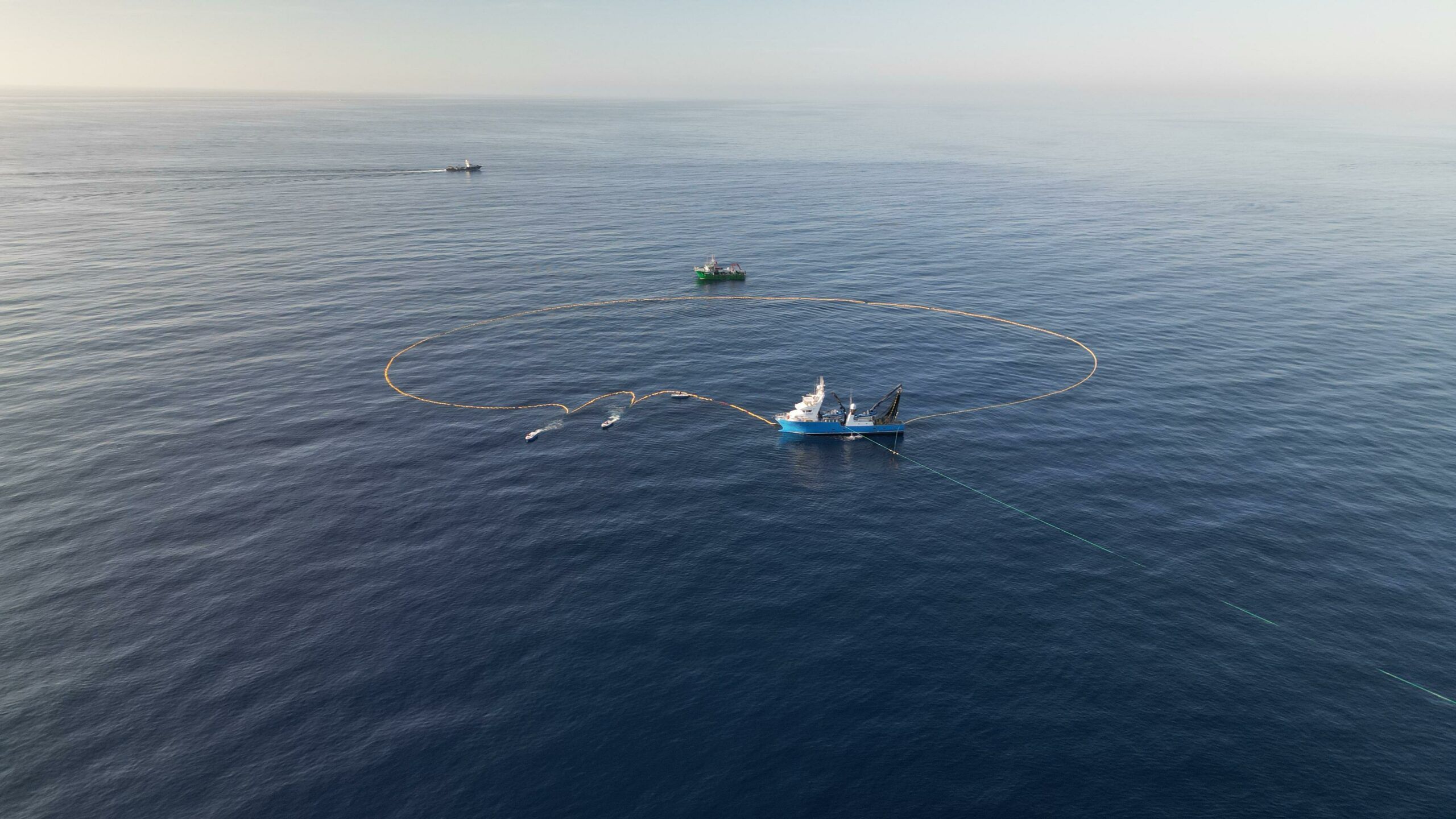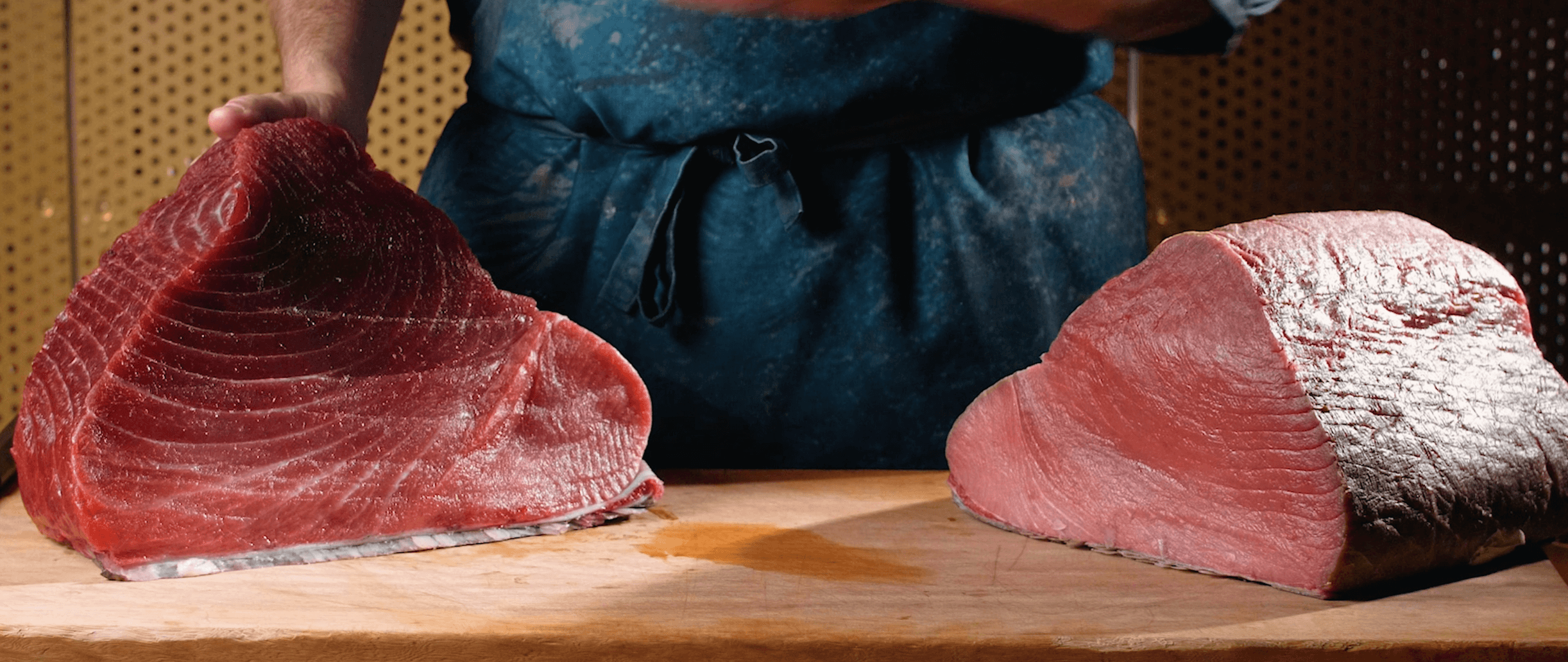
Raw bluefin tuna: How long must a piece be aged to reach the optimum point?
Fresh raw ingredients is key to quality cuisine, but fresh does not always mean optimal and even less so when we’re talking about raw bluefin tuna.
The Balfegó slaughter system (ike jime) and the feeding and storage of the fish, are key to aging the product.
The traceability system, where the slaughter date is indicated, also allows for accurate time keeping in order to carry out the entire process correctly.
“If you are brought a fish and it’s straight when you hold it by the tail, it means it’s fresh
but it doesn’t mean it’s the optimal time to eat it. It needs to settle”.
Ekaitz Apraiz, executive chef at Tunateca.
Chefs know that tuna requires a minimum of three or more days of aging to be able to eat it with optimal texture and flavor. But it’s much more complex than this. After 72 hours is the optimum time recommended to eat raw bluefin tuna.
How does aging affect raw bluefin tuna?
Let’s start at the beginning and with what’s obvious. Tuna is such a large fish that even their own temperature can take up to 24 hours to drop. For this reason, the important thing is that they settle and therefore, lower their temperature.
Another of the main reasons why we age raw bluefin tuna for at least 72 hours is because when the fish has just arrived, it comes so tense and stiff that none of its cuts are pleasant to eat.
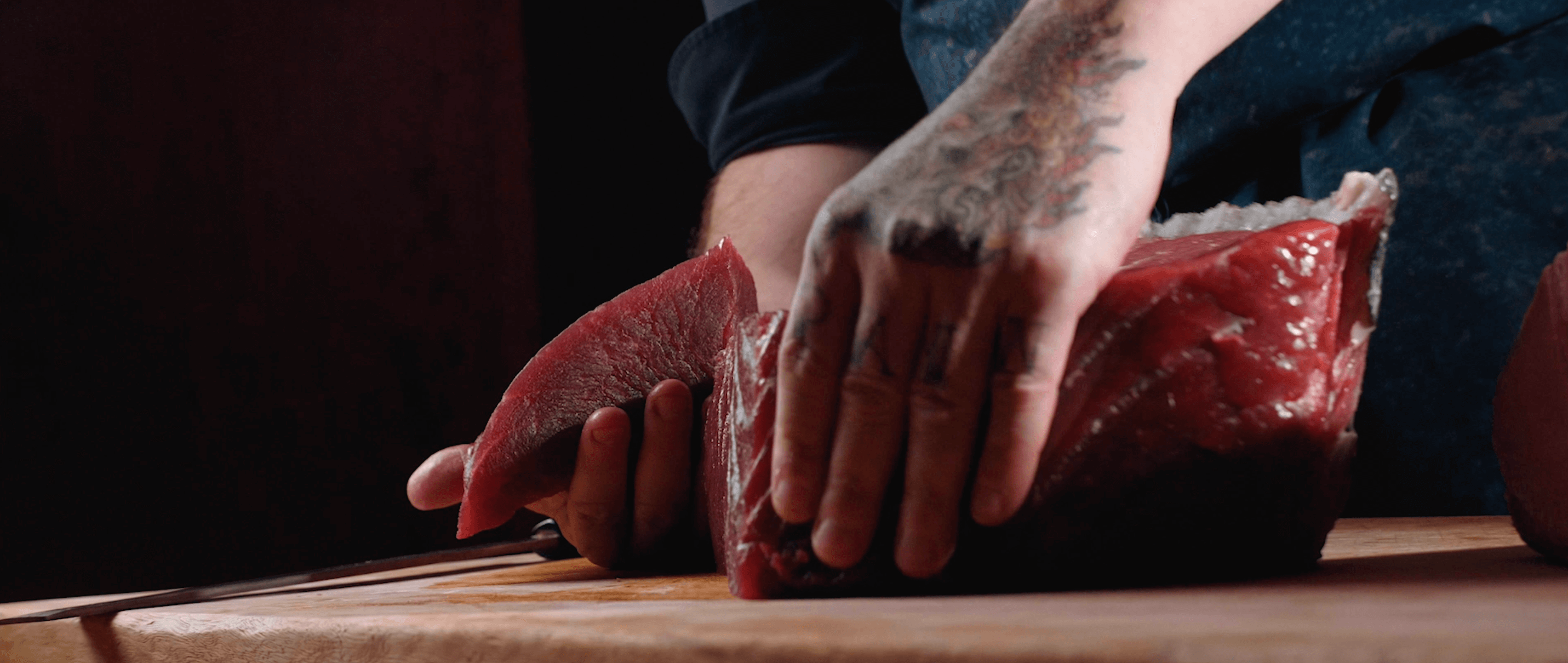
This stiffness not only affects the texture, but also the flavor, color and cut of the fish.
- Cut: if the bluefin tuna is not settled, the texture is so hard that even when the knife is inserted, it can twitch and can make strange shapes, like waves. The tough meat is not easy to handle and its possible that when cut with a knife, the joints of the meat itself are also cut and then the bone can become disfigured, spoiling the piece.
- Color: a piece that has not settled for a minimum of 72 hours maintains a very vivid color but that indicates that the fish is not settled. In this period, raw bluefin tuna has bluish and gold reflections that are not attractive in the cut.
- Taste: un-aged raw bluefin tuna has a somewhat metallic taste due to traces of blood. Where this flavor is most noticeable is in the akami (lean part of the loin, attached to the spine) because it is the least fatty area. The metallic flavor is also accentuated in the chutoro (fattiest part of the loin, attached to the skin) as well as in the otoro (belly).
- Fat: the level of fat is an indicator of the quality of the cut. In short, what we notice is that from that third day the loins and belly lose the excess water that they already have, and the piece begins to drain. Once it begins to lose that excess water, the natural color of the fat comes through. In chutoro, for example, you begin to see the division of red and pink very clearly.
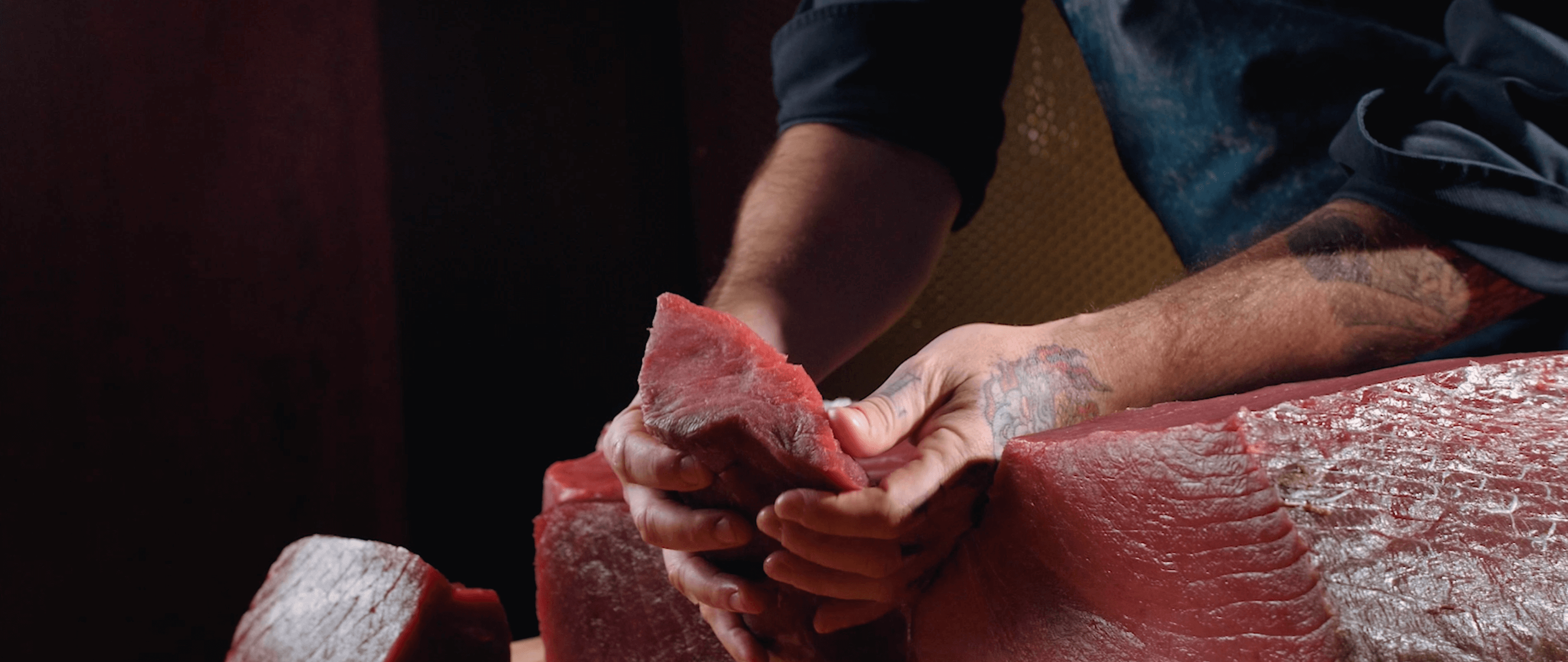
If there is one thing that characterizes raw bluefin tuna, it is its mellowness, its warmth, that melt-in-the-mouth feeling… This optimum stage of the tuna is only achieved by letting the piece settle because, as it ages, enzymes in the fish itself, break down the muscle protein chains and when this occurs, several things happen, including:
- The muscle hardness of the fish is broken down, making it more tender and softer on the palate.
- The different flavors of the fish are concentrated, so it has much more umami flavor.
- The metal notes caused by the excess blood also diminish and the longer we allow the enzymes to act in the aging process, the more significantly the quality of the fish increases.
Balfegó, through Tunateca, has developed a study into the aging of bluefin tuna
Japanese chefs have mastered it, but in Spain we are still learning and this inexperience with the product can be a problem when it comes to specific pieces of tuna. For this very reason, Balfegó is committed to its own research supported by its experience to share it with other chefs and bluefin tuna lovers.
The Balfegó Department of Innovation and Sustainability, together with the team of chefs at Tunateca Balfegó, strive to investigate, analyze and communicate the versatility of this sought-after fish. One of the lines of research concerns the aging of the fish and its advantages.

These are the optimal aging times for different cuts of raw bluefin tuna proposed by the team of chefs at Tunateca Balfegó.
By controlling the aging times of bluefin tuna, chefs gain another advantage and that is the ability to work with perspective. While most people now receive the fish, ration it, freeze it and defrost it as needed, aging allows them to start working with larger pieces without fear of spoilage.
Do you have any questions or want to talk to our experts? ▸Contact us






